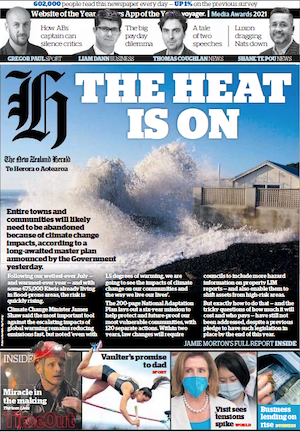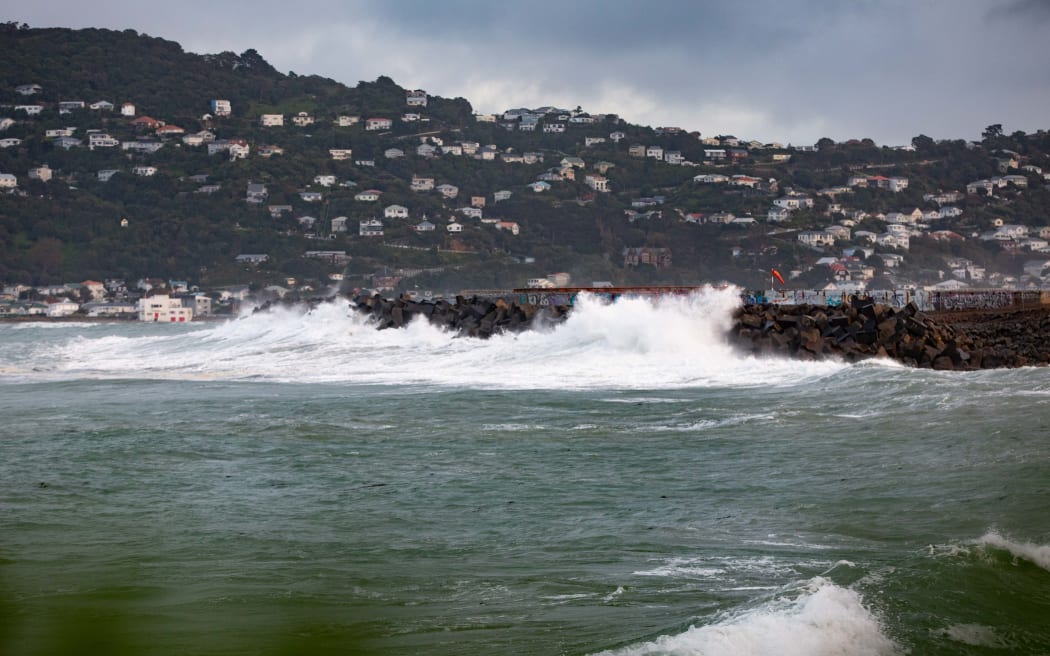By Hamish Cardwell, RNZ News climate reporter
For the first time Aotearoa New Zealand has a long-term strategy to deal with the effects of climate change, but the government plan released yesterday contains few answers to some of the toughest questions, including who pays for what.
The 200-page National Adaptation Plan shows the priorities for the next six years and pulls together into one place all government efforts to adapt to the warming globe.
A priority is to embed climate resilience in all government strategies and policies, the plan says.
Despite the draft version asking for public input on the toughest questions of all — for example, who will pay for damage and the cost to adapt to climate change; and how to fairly require people to leave their homes — this final version includes no definitive answers.
Instead, it says the massive Resource Management Act reform under way, and expected sometime next year, will be the primary driver in a number of areas, including managed retreat.
On managed retreat — getting some communities out of harm’s way in places where it is no longer viable to live — the plan says legislation will also be needed.
It reiterates costs will be shared between homeowners, local and central government, insurance companies and banks.
Building away from harm
It also wants to make sure homes and infrastructure are built away from harm.
The plan will see Treasury and Waka Kotahi integrate adapting to climate change into decision making.
Watch Climate Change Minister James Shaw introduce the National Adaptation Plan
It also pledges to:
- work with Māori on climate actions;
- establish an online one-stop-shop for information on adaptation; provide a rolling programme of targeted guidance; and
- start a “programme of work to unlock investment in climate resilience”.

The plan says no two communities will experience climate change in the same way, and the government has pledged that equity will be at its core.
The first three years of the plan are key for both collecting the data and information and starting long-term programmes.
Other major works to address the impact of climate change already under way include reforming the emergency management system and three waters services, and reviewing the future of local government.
What does the government say?
Climate Change Minister James Shaw said the plan was a joined up approach that would support community-based adaptation with national policies and legislation.
The idea was to have tools to prepare for events before they happen rather than after.
He said the National Adaptation Plan brought together more than 120 actions that provided a blueprint for more resilient communities.
“Climate change is a global challenge, but its impacts are felt in our local communities and in our homes,” Shaw said.
“We have already seen what can unfold. Severe weather events that had previously seemed unthinkable, even only a few years ago, are now happening at a pace and intensity we have never experienced before.
“And when they happen, everything from the roads we rely on, to our drains and water supplies, to getting the kids’ to school can be severely disrupted.
“Taking action to prepare for these impacts will make our communities safer, protect our environment, and ensure our towns and cities can continue to support people’s jobs and livelihoods.”

Launching the report, Shaw said that managed retreat was only one of the possibilities for communities.
Accommodating the changes such as by raising houses, or using flood defences like sea walls, were options and the government wanted to ensure communities had “really good information available to them” to make those decisions.
The emphasis was on empowering local communities to determine the risks and map out the options, he said.
Up till now there had been “haphazard approach” with councils doing different things, and the aim was to enable local authorities to do the right thing and make information available to property owners.
“We’ve said that we will not cover every loss and we cannot cover every loss in the country”, he said. “We have to work to support those communities that are going to be really struggling to adapt.”
Managed retreat
Managed retreat is the process of abandoning places where the risk from hazards like flooding or erosion make it no longer viable to live.
It includes RMA reform, which will play a major role. It will require local and central government, hapū, iwi and Māori, and communities to plan together how their areas will adapt
Planning tools will be provided to stop developments in high-risk areas and facilitate retreat where risks are intolerable.
Methods and requirements will be set for councils when planning for natural hazards and considering future climate risks through the National Planning Framework.
Integration between land-use planning and investment decisions will be increased. This means decisions on zoning or other planning mechanisms can occur at the same time as investment and infrastructure planning.
It also includes passing legislation to support managed retreat (this means after a decision has been made that managed retreat is the way to go). The Climate Adaptation Bill sets out the managed retreat framework and will be done by the end of 2023.
Building in the right place
Many communities are in places that face increased likelihood of damage from impacts of climate change. Regulatory frameworks and institutions do not always account for changing risks.
Some plans include:
- RMA reform — This will be a major driver of what gets built where. In 2023, the Natural and Built Environments Act and the Spatial Planning Act are expected to be passed.
- Integrating adaptation into Treasury and Waka Kotahi decisions (both by 2024)
- Set national direction on natural hazard risk management and climate adaptation through the National Planning Framework. It will be released for consultation after the Natural and Built Environments Act is passed.
- Establish an initiative for resilient public housing
What else is in the plan?
The plan is essentially a guide for local authorities, business and individuals to what the government sees as the priorities.
It identifies 43 priority risks that Aotearoa faces from climate change as well as the risk to the telecommunications network.
Some plans include:
- Look at setting a resilience standard for infrastructure
- Finish work on case study exploring “co-investment” of flood resilience
- Flood insurance — Continue work on potential government-run home flood insurance (By the end of 2022, the government will have received advice on flood insurance options and agreed to next steps).
- Prioritising nature-based solutions
- Improving natural hazard information on Land Information Memoranda – Changes to legal requirements for LIMs to help people make better-informed decisions about natural hazard risk when buying a property.
- Designing and developing risk and resilience and climate adaptation information portals — This will give the public natural hazard risk information, and provide access to climate data and information.
- Implementing the National Disaster Resilience Strategy
- Establishing a platform for Māori climate action
- Working with community housing providers to enable effective climate hazard response

On the roles of central and local government
The plan says the government’s role is to set regulation, provide information, invest in infrastructure and the environment.
Local government is at the centre of the response because most hazards happen on a local scale, it says. Local government will maintain its central role in helping communities to understand and respond together.
“Councils have statutory responsibilities to avoid or mitigate natural hazards and to have regard to the effects of climate change when making certain decisions.
“They are also responsible for civil defence and emergency management, and improving community resilience through public education and local planning. ”
Councils also own many assets and infrastructure which are vulnerable to climate change.
The plan gives interim advice to councils advice on making decisions about risks to coastal and other vulnerable areas and under specific warming scenarios of warming using just released guidance.
This comprehensive guidance will become mandatory by the end of November.
Business and the environment
The plan notes climate change will have a significant impact on native species, ecosystems and the environment.
It will prioritise nature-based solutions, give advice to landowners about how to restore indigenous forests, and help farmers support biodiversity.
The public sector, businesses, property owners and civil society need to take action to reduce the scale of the long-term economic costs, and seize the opportunities of a changing climate, the plan says.
For example, less than 10 percent of firms have assessed risks to their business from a changing climate, and less than 20 percent intend to take action to reduce their risks over the next five years.
What next for the plan?
It is the first in a series of national adaptation plans that will be prepared every six years.
Each will respond to a new national climate change risk assessment. All New Zealanders will be able to have their say on each plan.
Every two years, He Pou a Rangi — Climate Change Commission will report to the Minister of Climate Change on the implementation and effectiveness of the national adaptation plan.
A government climate change board of executives is being established to oversee the emissions reduction plan and national adaptation plan.
It will monitor and report on progress each year, while a group of government ministers will oversee the plan and drive progress.
This article is republished under a community partnership agreement with RNZ.
This content originally appeared on Asia Pacific Report and was authored by APR editor.
APR editor | Radio Free (2022-08-04T05:08:29+00:00) NZ’s new climate crisis plan: ‘Blueprint for more resilient communities’. Retrieved from https://www.radiofree.org/2022/08/04/nzs-new-climate-crisis-plan-blueprint-for-more-resilient-communities/
Please log in to upload a file.
There are no updates yet.
Click the Upload button above to add an update.